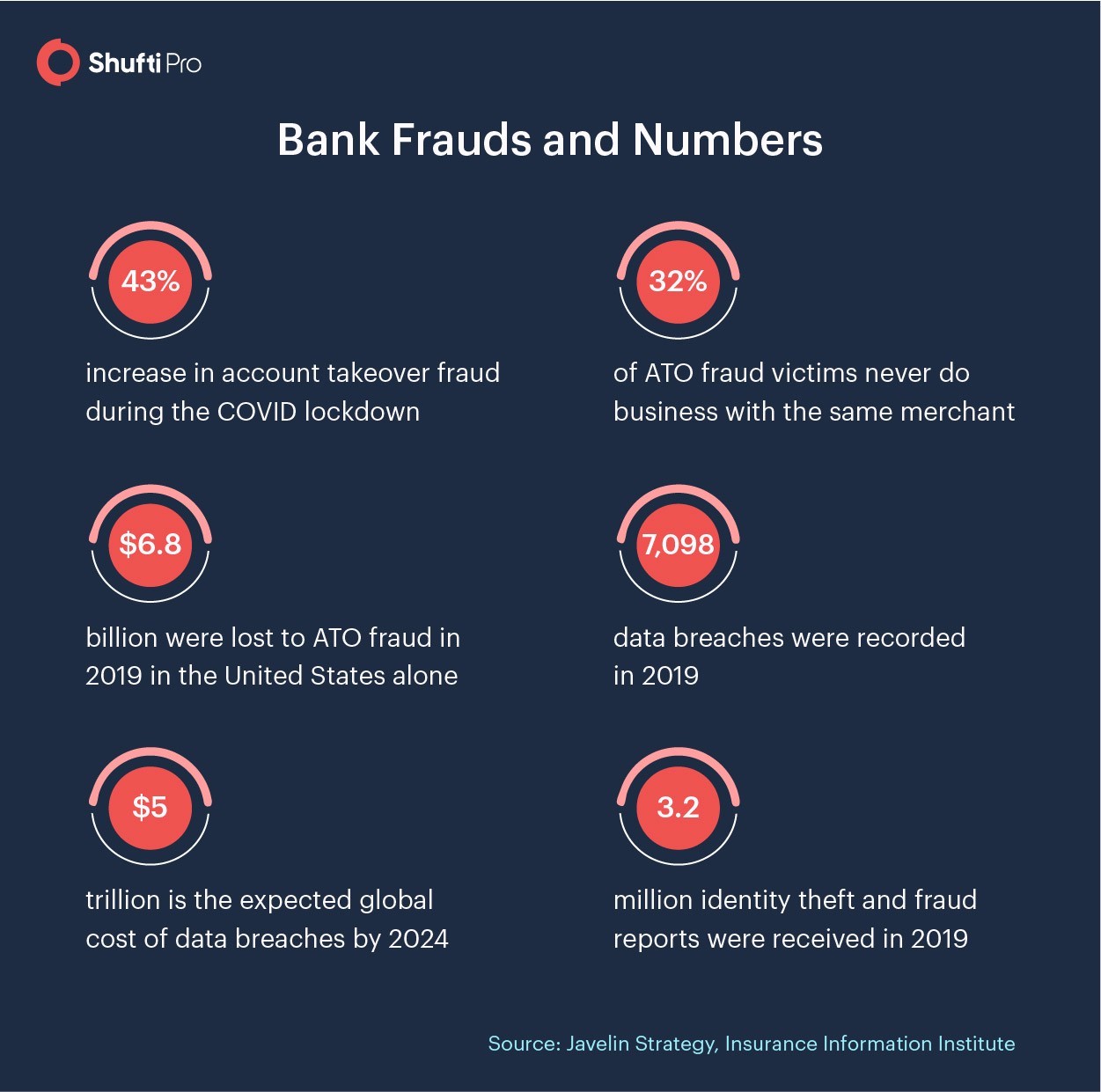Multi-Tier Security – Another Line of Defense Against Bank Account Scammers

The banking sector has been witnessing a significant rise in criminal activities is a major concern of security authorities these days. The latest reports revealed that banks have been violating KYC and AML regulations and there were skyrocketing penalties in 2020. Protecting banks and customers is necessary and identity verification is one of the best ways of doing so. However, conventional methods like manual document verification do not suffice for the needs. There must be more robust and automated systems like digital identity verification and video KYC that can enhance the efficiency of the process.
A single line of defence does not work when it comes to technologically advanced fraudsters. There must be layers of security to filter them no matter how hard they try to surpass ID checks. Hence, multi-tier security is what the banking sector needs. Multiple layers of security checks and identity verification methodologies will make it impossible for fraudsters to enter banks.
What is Multi-Tier Security?
Multi-tier security refers to multiple layers of identity verification to enhance security in organisations. Fraudsters are developing sophisticated ways of fulfilling their malicious intent and a single layer of security cannot help companies. Therefore, there must be multiple layers of ID verification that can prevent fraudsters from entering the business.
A Summary of Bank Scams and Frauds
Over time, many different types of frauds and scams have struck the banking industry. Due to advanced technology, not only banks are streamlining their processes, but criminals have also figured out techniques to execute their plans. Many new breeds of scams have surprised organisations, especially banks. Let’s take a look at some of the fraudulent activities.
Account Takeover Fraud
Account takeover (ATO) refers to the fraud in which criminals get illegal access to bank accounts and use them for illicit activities like money laundering and chargebacks. As technology advances, fraudsters have also become sophisticated in committing account takeover fraud. There was a 43 per cent increase in account takeover fraud during the global lockdown in 2020. The numbers are expected to increase this year as well due to rapid digitisation.
New Account Fraud
A new breed of frauds struck the world a few years ago by the name new account fraud. With time, the rate of this fraud has increased and defeated all other kinds of scams. For a new account fraud, fraudsters use stolen, forged, or synthetic identities to open a new bank account, get a new credit/debit card, or loan money from the bank. According to Javelin Strategy, 3.2 million customers were affected by this fraud alone in 2018.
Identity Theft
Identity theft has been a threat to businesses for a very long time. The numbers are continuously increasing and banks are the primary target. Unfortunately, identity theft has taken various forms as well, including child identity theft, medical identity theft, and social identity theft. This enables criminals in making purchases, opening new bank accounts, and enjoying numerous other benefits with false names.
Data Breach
Data breach is a social engineering technique that fraudsters use to acquire customer information. The stolen data is later used for bank account scams, identity theft, and numerous other illegal activities. The identities stolen from a data breach are also used for new account fraud. Around 8,000 data breaches were reported in 2019. In the first half of 2020, 540 data breaches were reported only in the United States according to Statista.
Biometric Authentication – The Additional Security Layer
Biometric authentication is the additional layer of security that not only enhances the level of security, but it is also a rigid measure that fraudsters cannot dodge. Fooling biometrics is not a piece of cake for criminals because biometric authentication requires the live presence of the individual for identity verification. Voice, face, palm, iris, pupil, and retina are some of the biometric traits of an individual that are required for biometric verification.
Biometric verification employs various artificial intelligence models and the following techniques are used for authentication:
- 3D depth analysis
- Micro-expression analysis
- Skin texture analysis
- Liveness detection
All these techniques ensure the live presence of individuals and any spoof attacks or deepfakes can be identified within seconds.
How will Multi-Tier Security Help Your Bank?
Digital identity verification is a multi-tier security measure that your bank needs. This system has multiple methods of verifying identities that prevent fraudsters from entering the business. Here is how the process of multi-tier security works:
- First, the individual has to register on your bank’s website for the identity verification process
- Along with the registration details, government-issued ID documents are also submitted
- Then, the information submitted is verified with the government-issued ID document
- Once the documents are verified, biometric authentication comes in action and face verification checks are performed
- Customers have to submit their selfie or video during verification which is matched with the image on the ID document
- Lastly, consent verification checks are also performed in which the customer has to submit a handwritten or typed consent note
Conclusion
All in all, verifying identities with the manual method is not an adequate option in the digital world. Digital identity verification is an automated process of verifying identities with layers of security to increase the efficacy of the process. One of the strongest layers in this method is biometric authentication that ensures the live presence of the customer for verification. Fraudsters cannot bypass these checks through any of their techniques. Due to the robustness of this technique, bank account scammers fear from the additional layers of security to verify identities and transactions. Identity theft, account takeover fraud, new account fraud, and data breaches are some of the criminal activities that have increased over time. Now, banks need a multi-tier security system to ensure the security of the customers as well as the organisation.
Get in touch with our experts and learn more about the digital ID verification system and biometric authentication.












